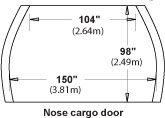I would disagree strongly for two reasons: political and practical
The former relates to how Australian units are used. A Brigade is the smallest element that can 'own' battlespace, without it you just get slotted into another nation's C2 network with limited political say as to how the campaign is conducted - a'la Afghanistan or Iraq. If the conflict is large / important enough that we would consider a Brigade, it's political vital that we have a say in the campaign. A Brigade also allows greater control of ROE and missions - you artillery and infantry (for instance) operate off the same rules and apply the same limits to targeting.
The latter relates to the way the ADF is trained, the patchy interoperability between likely allies and the way the force is designed. The reality is that a Brigade is how the Army, and ADF, is moving towards. The support elements are built around that, the soldiers are trained like that and that's what is needed to meet political direction. The Brigade has everything a force needs - a BG doesn't - prime example being Army Aviation or armoured breaching equipment. And the days of relying on the US for everything beyond rifles is (has?) coming to an end.
Beyond that, if we can lift a Bde we can lift a BG. If all we can lift is a BG, we might not be able to lift a BG...
While I disagree with the feasibility of operational use (noting that ASM are not only State-owned weapons anymore), I'd suggest a Balikpapan class replacement will probably be considered to provide a low tier capability between the high-end LHD and the ship-to-shore connector of the LCM-8 / LLC. It still doesn't lift a lot, and without a lot of speed it won't ever sail against a threat, but it may lift another BG or so.
Ask!

If I can't answer I'll just ignore...

The limiting factor comes back to warm bodies wearing an Australian flag. There isn't enough in the Navy and we don't have a merchant fleet anymore. The air side is ok; frankly it'll be what keeps Qantas funded no matter what. But without that national sea-lift capability, the only answer we have is contracted support. A government funded merchant fleet was looked at by a small team of uniformed peeps; but it was assessed that there was no way the LNP government would support something that, honestly, would become a hotbed of strong unionism. There is really awesome bipartisanship on Defence - but that was a leap to far
But contracts are ok - there are ways of ensuring (legally!!) the contracted fleet sails where we need it to go. The problem lies in the size of the international lift capability - it's actually quite limited. Until now the answer has been "JMOVGP will raise a contract when required"; that's no longer feasible or practical. It's not an Australian thing; the UK and US have hit this wall in recent times. If the US can't afford to raise last minute contract lift, what hope have we?
And that's the problem with (b). It may be that if it was put to the Government they would accept such a fleet, but it was assessed as unlikely. Unlikely enough that it wasn't considered further....

